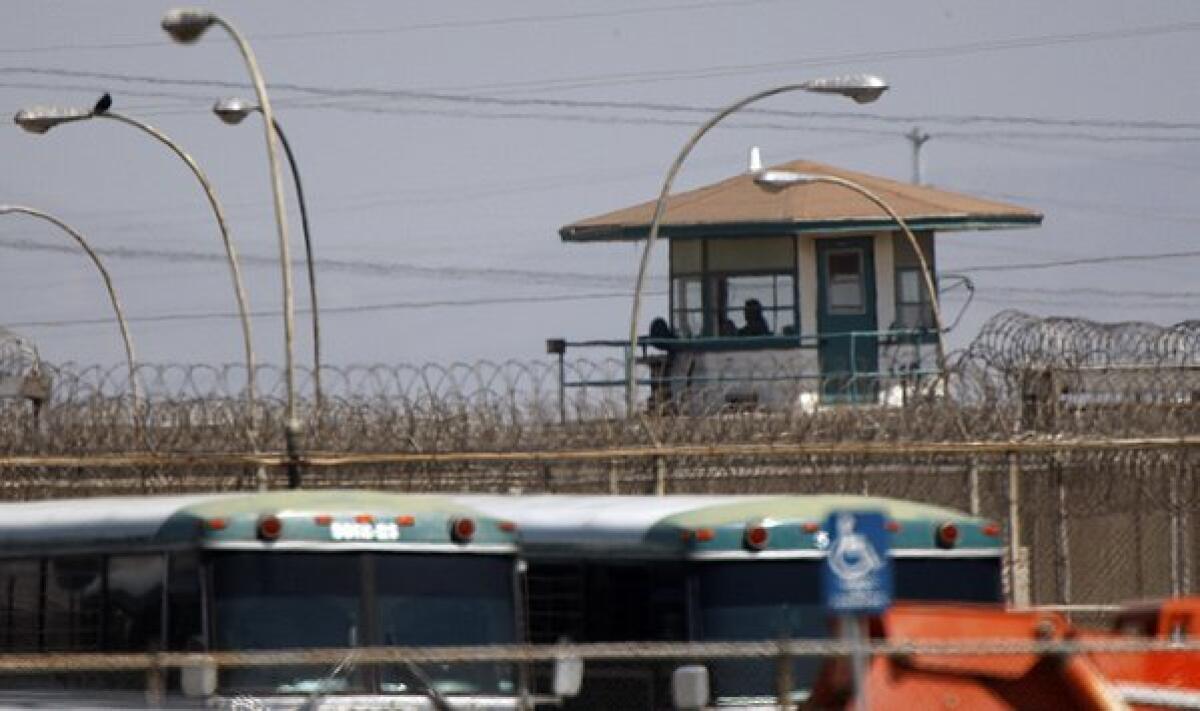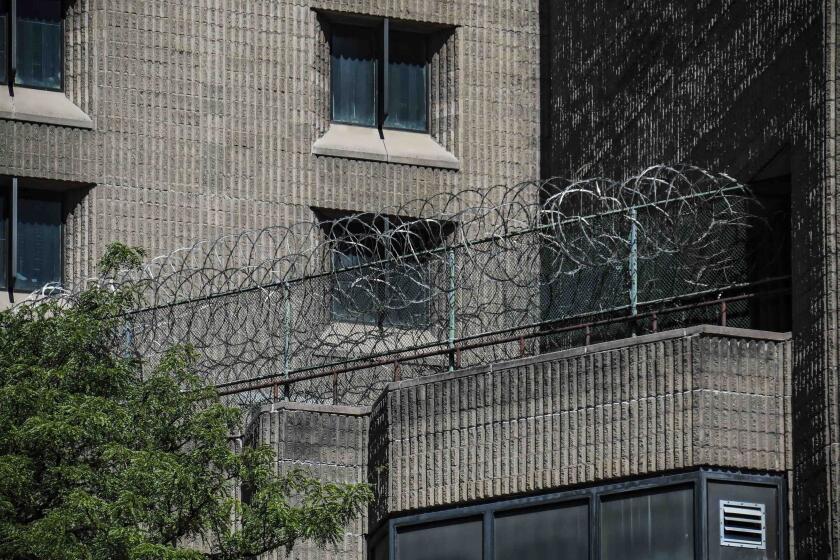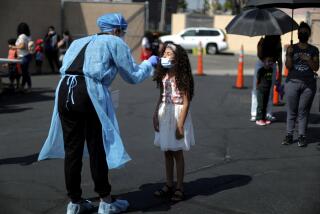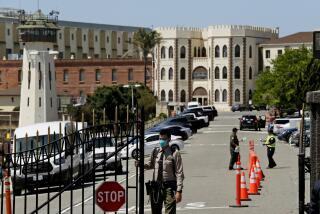3 more inmates die at Chino prison as coronavirus infections continue to spread

As an outbreak of the coronavirus continues to rage inside the California Institution for Men in Chino, three more inmates at the prison have died, the state Department of Corrections and Rehabilitation announced Friday.
The prisoners, who died over the course of two days this week at San Bernardino County hospitals, are among a growing number of inmates who have contracted COVID-19. Outbreaks at federal penitentiaries at Terminal Island in San Pedro and Lompoc are among the worst in the nation.
The number of inmates infected at the Chino prison has more than doubled to 332, officials said. Prisoners are housed in large dormitories, and implementing social distancing to stem the spread of the virus has been a struggle. The prison previously had reported only one death, on April 19.
Dana Simas, a corrections spokeswoman, said the families of the three inmates who died have been notified. “No additional information is being provided to protect individual medical privacy,” she said in a statement to The Times.
The increase in the number of coronavirus cases is a result of mass testing of inmates regardless of symptoms, according to Lt. Thomas Lopez, a spokesman for the Chino prison. Inmates and correctional staff at the prison have pushed for more widespread testing as fear has grown that asymptomatic prisoners may be infecting others with existing medical conditions that make them more vulnerable.
Debra Harrison Blagg said she fears for her husband, John Blagg, who is serving eight years for driving under the influence and has suffered three prior heart attacks.
“I am so scared for John I cannot stop crying,” she said.
Lawmakers are joining prisoners’ advocates who are alarmed by the government’s response to the growing coronavirus crisis behind bars.
A federal judge last month rejected an effort to reduce the state’s inmate population by thousands in order to curb the spread of the coronavirus, saying the state has already made “numerous and significant” changes.
U.S. District Judge Jon S. Tigar said California has taken measures to reduce overcrowding, including halting the admission of an expected 3,000 new inmates from county jails and the planned early release of some 3,500 inmates over the next two months.
State lawyers say that the corrections agency is implementing a social distancing plan involving pods in which groups of inmates are separated and bedding is rearranged to have each pod more than six feet from others. But with 45,000 inmates in the system having medical conditions that make them more vulnerable to the virus, attorneys argue more must be done.
Nationally, more than 14,500 inmates have tested positive for COVID-19. Forty-four inmates have died in federal prisons, according to the federal Bureau of Prisons. The Marshall Project prison tracker had documented 218 deaths related to the coronavirus as of last week among all types of incarceration.
In California, the number of inmates at the Federal Correctional Institute at Lompoc skyrocketed in the last week as well. Nearly 70% of the inmates — 792 men — have tested positive as mass testing of all inmates got underway.
Eleven staff members are also infected at the facility, which houses 1,162 low-security inmates. A military mobile hospital has been built on the grounds to cope with the growing number of sick. At a neighboring medium-security prison, 33 inmates and 14 staff are infected.
Lompoc is now has the second-largest COVID-19 outbreak among federal facilities, behind Terminal Island, where 644 inmates have been infected and six have died. In an effort to keep the infection rate down, inmates have been spread out across the Terminal Island complex using a factory and U.S. Coast Guard facilities.
Federal prison officials and Los Angeles County public health officials have said that the numbers are high because so many of the inmates have been tested.
Rep. Nanette Diaz Barragan (D-San Pedro) said this week after speaking to the warden that she was disappointed with the efforts to release inmates there. Only 46 prisoners are being considered and only five have actually been released from the low-security facility that houses just over a 1,000 medically vulnerable inmates.
The wife of one inmate, who asked not to be identified, said once her husband contracted the virus at Terminal Island, he was taken to a San Pedro hospital, but it took her days to find out where he was. She said she didn’t learn how serious his condition was until she spoke with a hospital chaplain.
The woman said her husband survived the illness and is now back at the prison but is struggling to recover. “He is very weak. He fell down in the shower,” she said.
More to Read
Sign up for Essential California
The most important California stories and recommendations in your inbox every morning.
You may occasionally receive promotional content from the Los Angeles Times.












